PHOTO ESSAY
As drought ravages parts of the Karoo, life is becoming harder by the day for farmers and their livestock
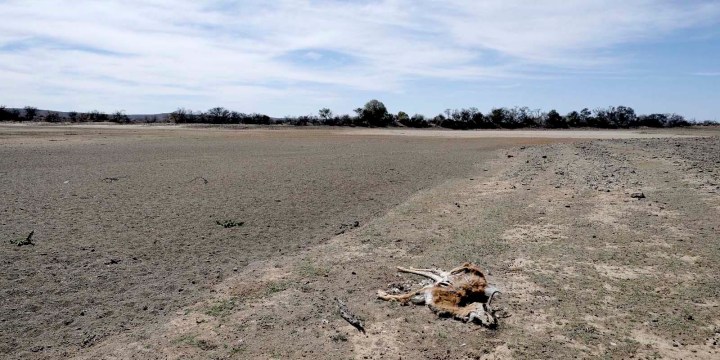
The farmers in the Eastern Cape’s Karoo are given to thousand-yard stares. Moments where they recall the good years, before the current drought. Not easy years in themselves, as is the norm in the Karoo. Or they wonder when the drought will break (sometimes whether it will break at all). And when it does, will it be with a flood, as often happens. Or, how they are going to cope when coming this far has taken such a heavy toll, especially on those who have given up or in a few tragic cases, taken their own lives. All this in what’s only a small part of the Karoo.
I undertook an extended road trip to Cape Town, for a wedding, via Graaff-Reinet. I wanted to see what was happening with the drought in the area because stories on it cropped up every so often in the media and it has been going on for between six and eight years, depending on who I spoke to. I had no plan other than a contact number for Gift of the Givers co-ordinator, Corene Conradie, and a few commercial farmers, notably in the Aberdeen/Willowmore area.
Is it as bad as reported? In a nutshell, it is. Devastatingly so.
There are plenty of statistics around the issue of the drought – this is more of a personal perspective. Weeks later, I’m still a little confused by the drought. To passing travellers, it’s not always that obvious. It is difficult to show visually – a case of looking, but not seeing.
This is understandable. The Karoo is, after all, a dry place. It is also a romantic place of feelings that sometimes go beyond expression and where a photograph, as good as it might be, can only suggest the magnificence of the place.
Back to the Eastern Cape and the Aberdeen/Willowmore area. Slow down a bit and look more closely. Stop somewhere and take a walk into the veld and look down. The small bushes, commonly referred to as Karoo bushes, are brittle. Without leaves and long dried out by the sun and lack of proper rain. There might be a bit of rain here and there but it merely speckles the ground. The rain I’m told, as little as it might be, needs to be more regular.
Dickie and Colleen Ogilvie’s farm on Doornkraal outside Aberdeen. He says the average rainfall for the area in normal times is around 250mm; the last seven years have seen only about a third of that. The best rainfall is over March and April “but we’ll take it anytime it happens”, he comments wryly.
And it happened, a month later, but in a cruel fashion. At the beginning of November there was a huge downpour and a neighbour experienced 50mm in 20 minutes.
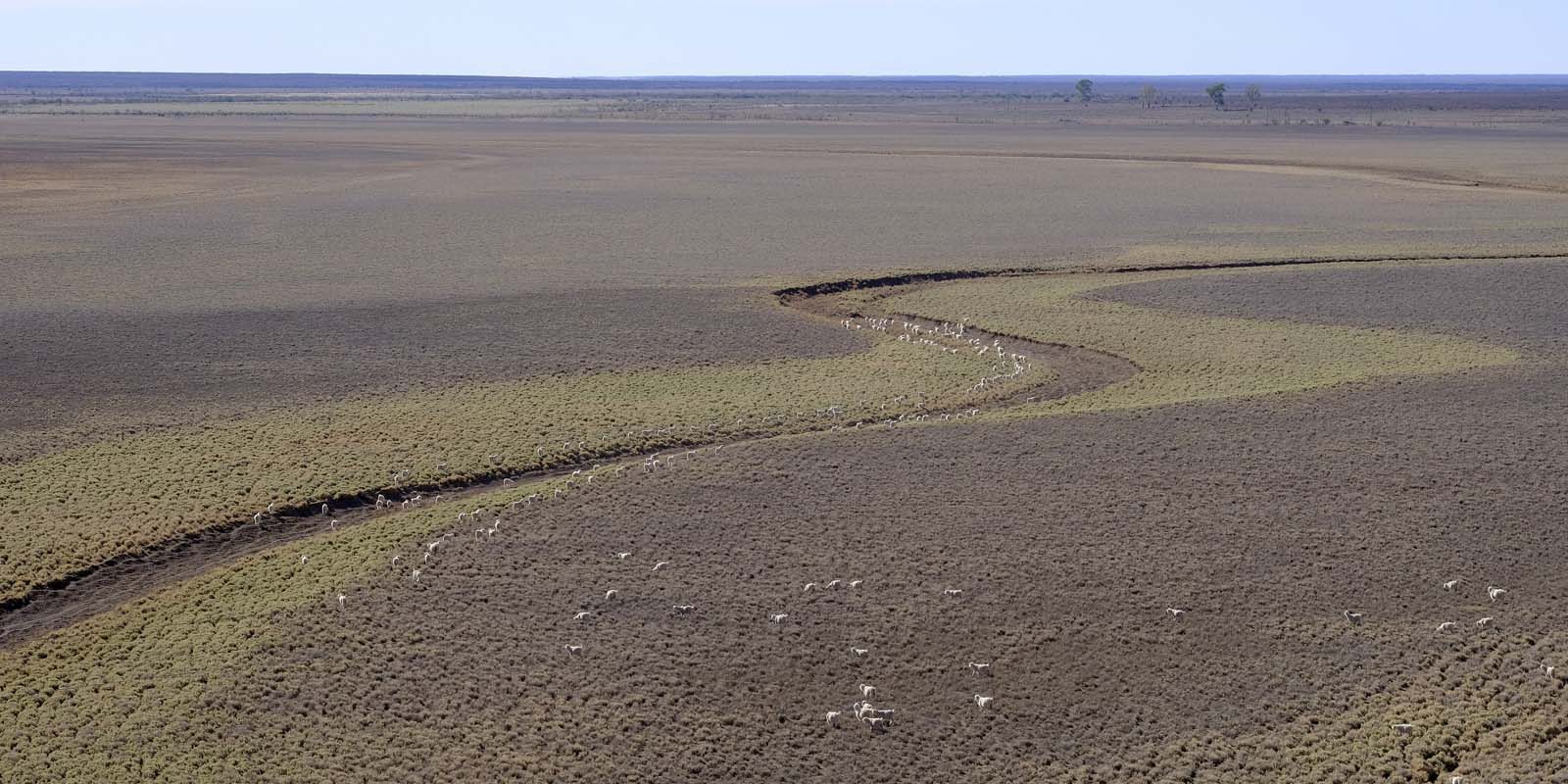
Angora goats in the Beervlei Dam. The dam was completed in 1957 and was not built as a storage dam but for flood control and irrigation of farms below the dam. It lies 30km outside of Willowmore towards Aberdeen and was last full in 2000. Due to some rain further north and a farmers dam wall breaking near Rietbron a month after this photograph was taken it had some water in it again. It did fill not to capacity and days later the dam was dry again. Willowmore, Eastern Cape, 04 October 2021. (Photo: John Hogg)
“It’s not effective rain,” says Dickie. “The veld is so hard and dry and lacking in cover that the runoff is quick, like water across a concrete slab.” Very little if anything is absorbed. It did, however, fill his dam almost to the point of overflowing.
He remains concerned that these parts of the veld may never recover and if they do, it will take upwards of five years in his estimation. Others agree. “The ‘Karoo bush’ is the bread and butter of the veld… it’s terrible out here,” says Dickie, as he scuffs the remains of a small bush with his boot.

Dickie Ogilvie stand near the main dam on his farm Doorndraai near Aberdeen. The dams on the farm have only been dry twice in the past 35 years and the veld is devastated. The Karoo bush is the bread and butter of the veld he says and is doubtful whether many will recover. For the veld to recover could take up to five years, if the rains return to their normal pattern and become effective. Eastern Cape, 21 September 2021. (Photo: John Hogg)
“The veld,” he says, “is the animals’ main source of roughage, which is needed to stimulate their appetite… you can throw mielies out until you’re blue in the face and it won’t do much good without the veld nutrition.”
The main dam on his farm is also dry (one of five, all dry) for only the second time in 35 years. The small ecosystem that once thrived below the dam wall is gone.
Around the dam, I saw nine sun-bleached shells. Dead Mountain tortoises. “They are dying in their hundreds,” says Dickie. We also drove by the carcass of a springbok, many of which are also reportedly dying in numbers. The ubiquitous thorn tree of the Karoo is dying, too. The animals, domestic and wild, are battling.

The main dam on Doringdraai farm, Aberdeen. It has only been dry twice in the last 35 years, the last time in 1991. The edge of the dry dam has numerous bleached white shells of Mountain tortoise, that searched in vain for water. “The desert animals are dying and when they start dying, we are in big trouble,” says Danie Meiring. A little over a month after this photograph was taken the area experienced a massive downpour. With the sparse cover on the veld the water ran off rapidly but this dam is now (08 Nov 2021) about 30cm from overflowing. Eastern Cape, 21 September 2021. (Photo: John Hogg)
The veld has little to offer, but predators still abound, also feeling the effects of the lack of food. Jackals, caracal and in the mountainous areas, leopards. The baboons are getting desperate. They have been known to disembowel lambs. Even worse, pied crows linger near pregnant ewes and pluck the eyes and tongues from the newborn lambs and kids. For the first time in all my many road trips through the Karoo, I felt a twinge of depression.

A thorn tree between 10-15 years old’, dried, brittle and collapsed on Doorndraai Farm. An all too familiar site in the drought areas. The trees’ fate is of great concern to the farmers.
Doorndraai, Aberdeen, Eastern Cape, 21 September 2021. (Photo: John Hogg)
I first noticed the trees in the Camdeboo National Park which I used as my base. Trees up to 15 years old, collapsed. Not just wilted or dry, but brutally mangled by the long-term effects of the drought.
The farmers all mention the trees, in mildly surprised tones. Not being people of excess, their words are also spare. They say of the drought that it is bad (occasionally “very bad”) or simply “dry”.

The ubiquitous ‘Karoo bush’ which farmer Dickie Ogilvy describes as the ” bread and butter of the veld” has been devasted over large swathes of the Eastern Cape Karoo. It is an irreplaceable source of nutrition for not only livestock but the wild animals of the region.
R341/N9 between De Rust and Willowmore. 04 October 2021. (Photo: John Hogg)
Dr Gideon Groenewald, a hydrologist who works with Gift of the Givers, says, “When farmers in that area say they are in trouble, you must know that it is really bad.” He also says that the dry periods are getting longer and the normal (good) times shorter.
“There is a 200-year drought cycle that lasts 18 years… we still have another 10 years to go. The whole world is in trouble” he adds.

Danie Meiring (on the right) watches on with concealed delight and much relief as the team clean out his borehole without having to drill deeper, on his Hoogekraal farm near Willowmore. With the second flush he allowed himself a brief display of joy by giving two thumbs up. Willowmore, Eastern Cape, 05 October 2021. (Photo: John Hogg)
All the farmers I spoke to agreed that climate change might have something to do with their predicament. They don’t think of it as the main cause, but do think that it has exacerbated the situation, and if it does persist for a further 10 years, it could end farming there – or at least drastically change the way farming is done.
The average rainfall figures can also be skewed, says Owen Poultney who farms on Volsruisleegte.
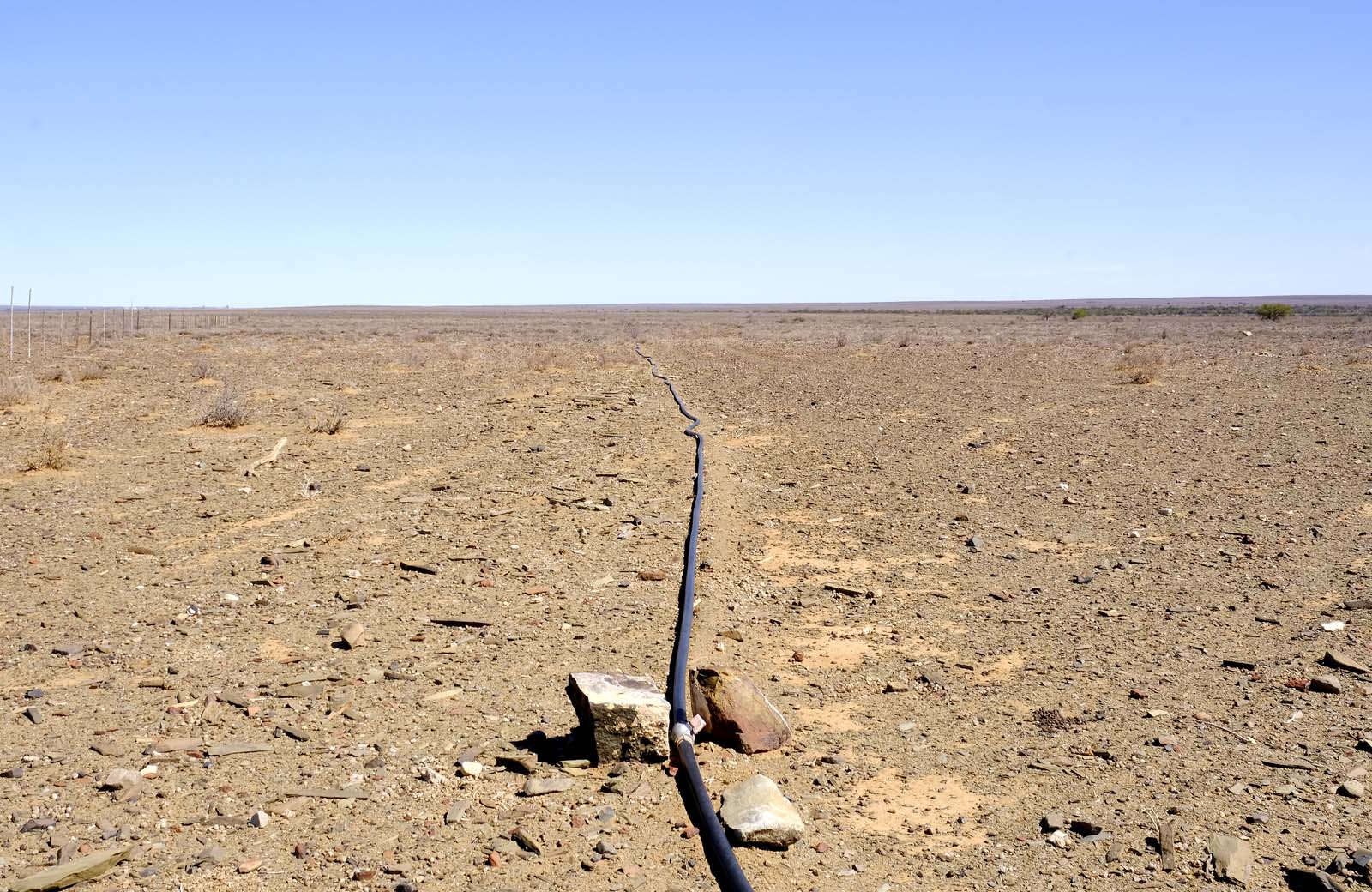
A plastic pipe runs water down, 400m, to a trough in the dry river bed. The cleaning out of the borehole means that the animals can at least get water again on Hoogekraal Farm between Willowmore and Aberdeen, 05 October 2021. (Photo: John Hogg)
Just below the Beervlei Dam and 30km outside Willowmore on the Aberdeen Road. About two years back, they had a cloudburst. Between 100-110mm in just under two hours. What happened then was a flash flood with damage and destruction – the same pattern mentioned by Dickie Ogilvie. It also flooded the main road, making it impassable for a couple of hours. Not long afterwards, most of the water was gone.
Ironically, earlier this year they had a hailstorm, usually associated with destruction, but here it was a form of frozen manna for the veld. “Fortunately, the stones were small and the damage minimal,” says Owen.
“The hail lay 15-20cm deep all over the farm. and the runoff from the melted hail put some water in our dam.” He smiled – a good memory smile.
The confusion for me around the drought is that there are areas that look fine but aren’t. You can get caught in the rain in Willowmore but there’s not a sign of rain anywhere near your farm 40km away.
“It stops within a few white lines on the road and goes no further,” says Owen.

Owen Poultney in the community room on Volstruisleegte Farm. Each working day starts here with a bible reading and a prayer. Followed by a discussion around what need doing for the week and that day. Owen considers it important to inform and listen. Functions, community workshops and celebrations also take place in the room. Last year Douglas Toise’s 50th birthday was celebrated here, on his 49th birthday. His wife Lizzy got the date wrong. Willowmore, Eastern Cape, 22 September 2021. (Photo: John Hogg)
There are, I discovered, three kinds of drought that are used as a measure. A meteorological drought, where the average rainfall is less than it should be over a defined period. An agricultural drought, where it affects soil moisture; and a hydrological drought, where basically the rivers and dams dry up and groundwater levels drop. Large swathes of the Karoo in the Eastern Cape are suffering all three.
A fourth category can be added, according to some international academics – that of a “human-induced drought”. This is due to the changing of water courses through dams and boreholes and management of the resource.
Owen Poultney says he is fortunate to have “a good bunch of lads who understand the situation and we all do what has to be done”.

Danie Meiring, of the farm Hoogekraal the day the borehole drillers arrived to check two of his three dry boreholes. He could only afford for them to check two. This one proved to only be blocked by roots and needed flushing out. He was much relieved that they did not have to drill deeper and please that he could fill the dam and water the animals at least.
Willowmore Drought, Eastern Cape, 05 October 2021. (Photo: John Hogg)
“We have had a few workers leave us and I try to talk them out of it, but they go anyway,” he continues. The situation is such that he cannot replace them, and the workload is divided among those who stay. Everyone chips in to do what is necessary.
One of the necessities is the almost continuous mixing of feed for the livestock, which are kept in camps close to the farmstead. They would starve in the veld, otherwise. Herds must be reduced or relocated.
Mornings start with a meeting, a Bible reading and prayer, then a discussion about what needs to be done that day and in the week ahead. “It’s important that everyone knows where we stand and why,” says Poultney.
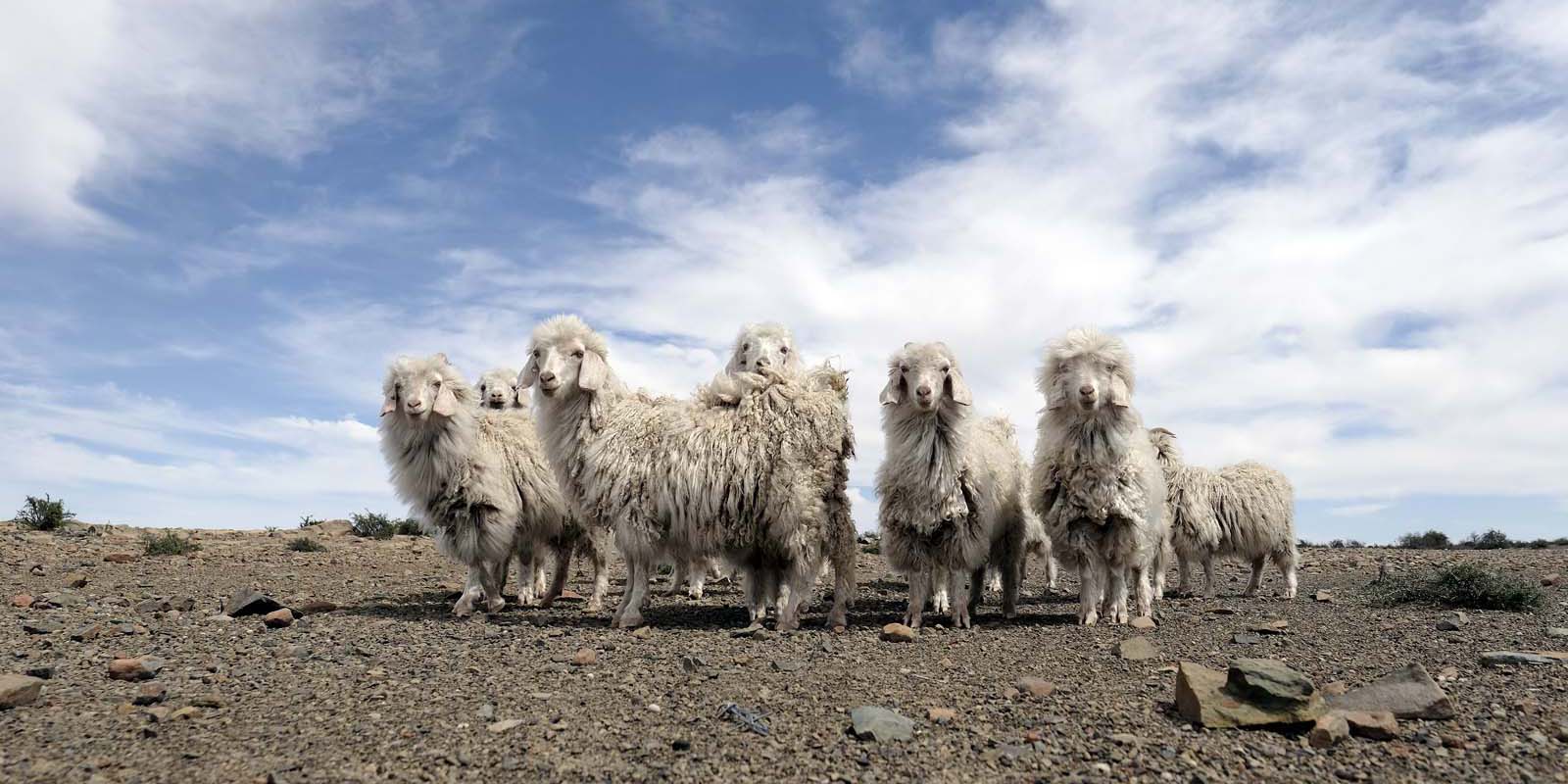
Angora goats rapidly descended on me as I stopped and got out of my car to open and close the gates of the camp on the Ogilvies Doorndraai farm. Because their feed has to be supplemented to the levels that it now is, a daily occurrence. They associate vehicles stopping and people with food. A common reaction wherever I went, Eastern Cape, 21 September 2021. (Photo: John Hogg)
Douglas Toise has worked for Poultney for 20 years; his wife also works on the farm. As we share the coolness of the dining room and a welcome soft drink, he has few words of complaint: it’s more a harsh reality. “Dit het kwaai afgedroog,” he says of the drought, “dis ‘n harde stryd maar ons moet net ons oe ophou, die reen sal eendag kom… ons hoop dit sal kom.”
He and his wife Lizzy attend church every Sunday with Poultney and his wife Pat. The Dominee informs the congregation about their district, so no one feels as if they’re alone in this hardship. “Ons moet net glo, net bid en sterk bly. Staan by jou baas en hou hom op”. “Landbou manne gee om, hulle harte is oop en dis ‘n ver end wat hulle stoot net om te kom help,” he says of the donations that come in from farmers up-country.
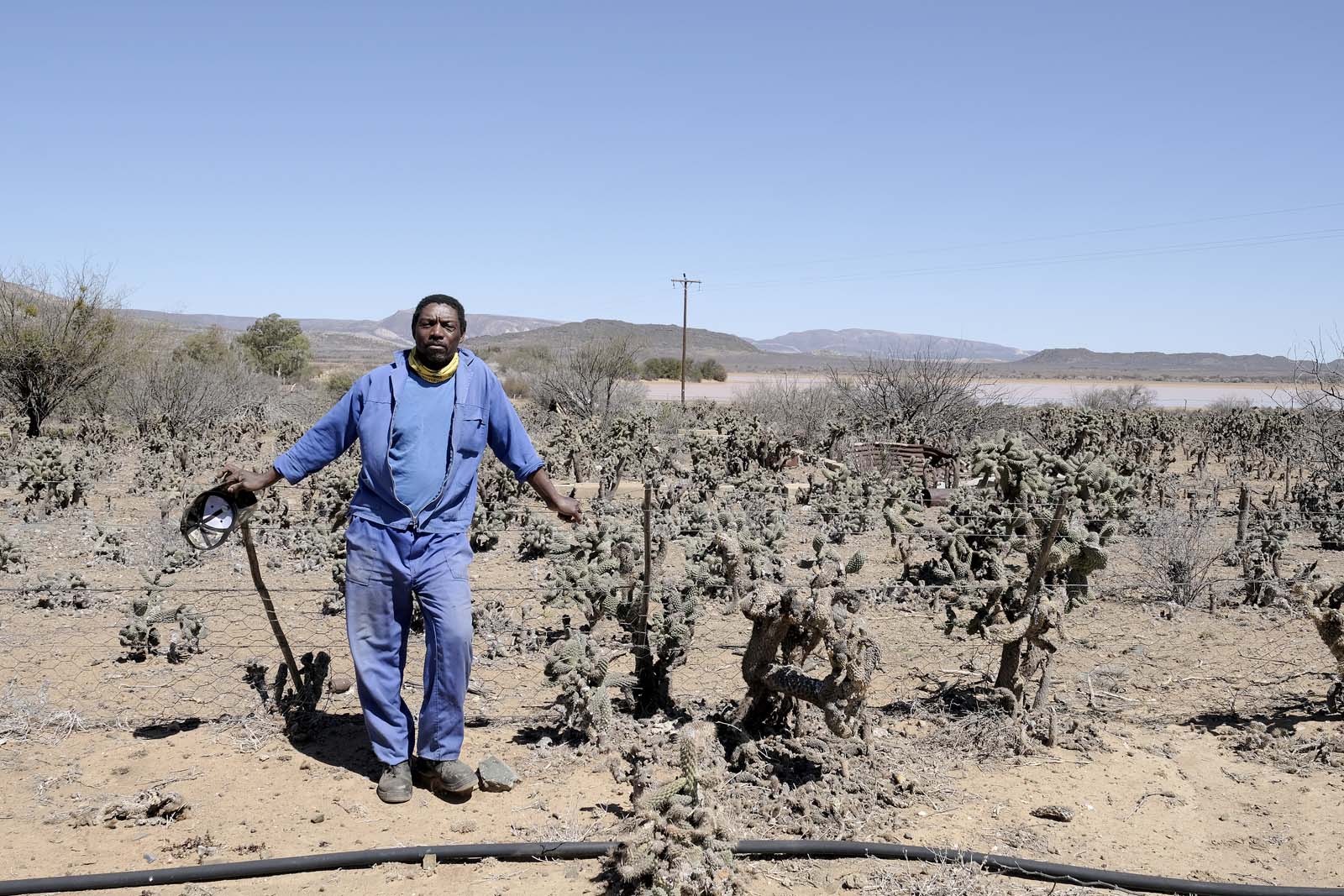
Douglas Toise who works on Volstruisleegte Farm, he has been there for 20 years and leans on his faith to deal with the current hardships. Behind him is the dam which has water in it thanks to a hailstorm. Willowmore, Eastern Cape, 22 September 2021. (Photo: John Hogg)
Eugene Van Der Bank is the Volsruisleegte farm manager. He speaks of how the drought has brought their community closer. “It’s a pity it came to this (the drought),” he says. “But it’s a good thing to bring us closer together.” The immediate community he talks of is made up of around 15 farms.
He explains the visual contradictions of the veld – the north side of the koppies is usually the “good” side while the south is “sour veld” and not so good. “The drought periods are getting longer and the ‘good years’ shorter,” he says.
Neighbouring farmer Danie Meiring and his wife San-Marie provide a veritable oasis for travellers passing along the N9 – the Oppi-Vlak Farmstall. He has, through the stall, become a centre for donations, some of which he shares with his local community.
He speaks of the generosity of those who can see how distressed the area is. One customer will say he has feed for livestock, but no transport. Later, another will offer transport… someone else might offer to contribute towards fuel costs – it all comes together and is delivered to Poultney’s farm as he has a forklift tractor and it is shared out from there.

Volstruisleegte Farm manager, Eugene Van Der Bank, drives the tractor and loads Mias Fouries truck with not only his share but two other farmers for who Mias offered to transport their bales. The farm has become an ad hoc distribution centre for their community. A lot of the donations come from the Free State and Northwest Provinces through connections of neighbour Danie Meiring. Willowmore, Eastern Cape, 22 September 2021. (Photo: John Hogg)
“We’re completely on our own here… the government has not helped at all.”
We sit over a breakfast roosterkoek while springbuck nibble at a lucerne bale just over the fence – cute, some may think, but for Danie and the other farmers, it is incredibly sad. The food in the veld is so depleted that he’s forced to provide them with bales.
“They are incredibly shy animals, so you must know how desperate they are to come this close,” he says. “The desert animals are dying and when they start dying, we are in big trouble,” he says, with that familiar stare.
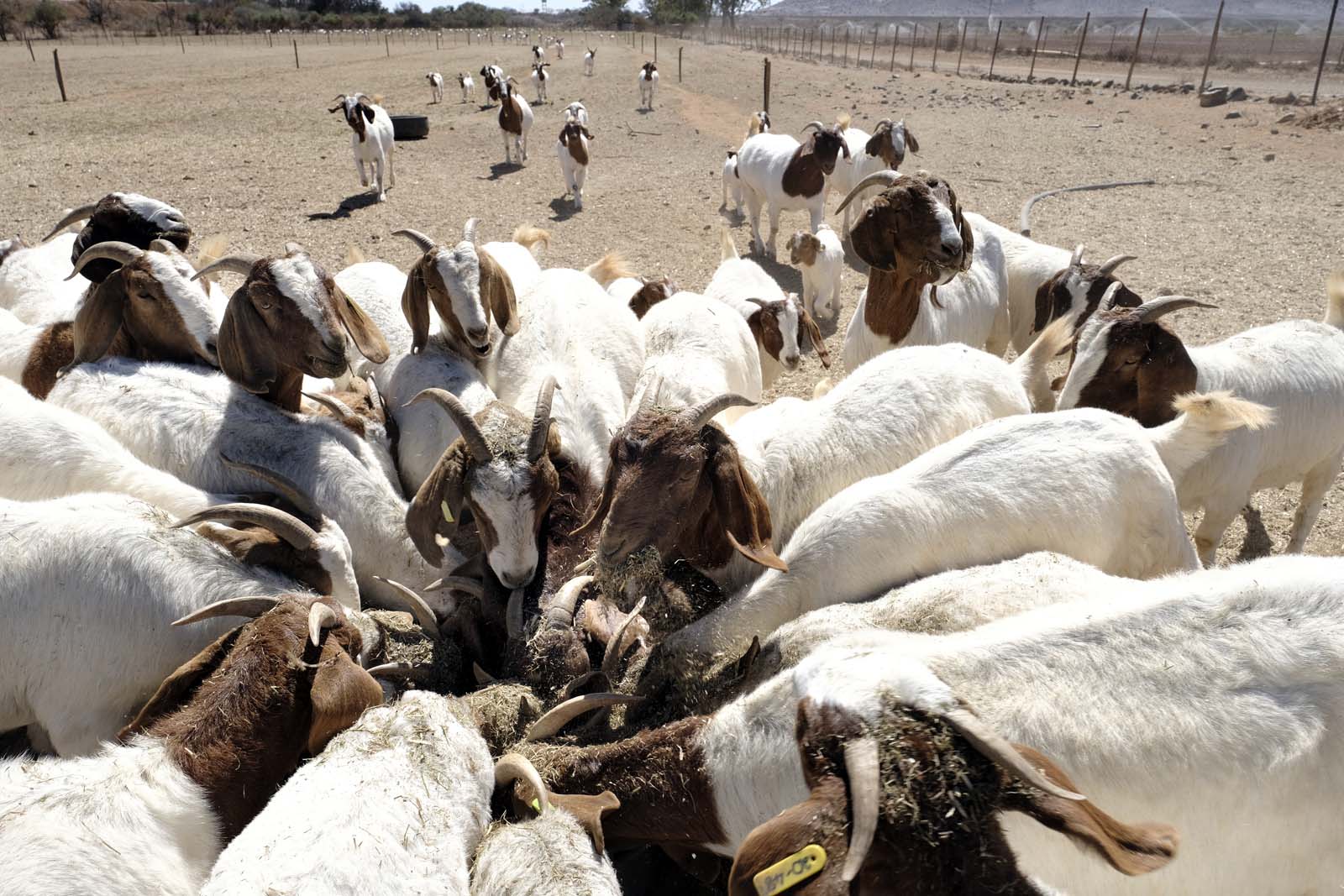
Feeding time in one of the camps at Volstruisleegte Farm, the goats come running as soon as someone walks through the gate with a sack. Up to four batches of food have to be mixed a day to keep up with the farms demands. Willowmore, Eastern Cape, 22 September 2021. (Photo: John Hogg)
He’d removed 23 dead springbuck from behind the farm stall two weeks earlier – “not nice for the public to see”. A dominee from Bethlehem asked him to send pictures and a video so he could raise funds for them within his congregation. “I just can’t do that; it breaks my heart,” was his response.
Danie tells the story of an elderly woman in Bloemfontein who, deeply troubled by the plight of the animals, contacted him and said she wanted to donate a bag of mielies and asked how she could get it there. There are other similar stories of ordinary people doing what they can to help.

Danie Meiring was concerned that this dam stood empty for long as it did. “That’s when the cracks widen and leaks happen” he said, adding that the sludge at the bottom isn’t cleaned out because it helps with cracks in the bottom.” The branches were put there for the monkeys, to help them get to the water without getting stuck and drowning. They prefer to drink from the dam, even though there are troughs outside and overflow ridge specifically for the animals and birds.” Willowmore, Eastern Cape, 05 October 2021. (Photo: John Hogg)
A plastic bottle sits on the counter near the till at Oppi-Vlak. This is for public donations – last year they could help pay for diesel for some deliveries after raising more than R24,000.
Dickie Ogilvy says that after six years of drought, a bit of government aid came the way of commercial farmers in the area. “It wasn’t much, but we took it on principle,” he said. “I received seven small bales, known as ‘blokkies-bale’, and six 50kg bags of mielies. Others received less – not even a day’s worth of feed for most.”
The provincial government did make money available for drought relief but none made it out to the plains beyond Graaff-Reinet.

Camdeboo National Park outside Graaff-Reinet. The first giveaway for me that there is a serious water problem was noticing the dead thorn trees. Dried brittle and burned black. This remained so throughout my trip around the area. The trees’ fate is of great concern to the farmers. Eastern Cape, 21 September 2021. (Photo: John Hogg)
Danie is waiting for a borehole drilling team from Uitenhage – they’re two weeks late. He has three dry boreholes but can only pay for two of them to be worked on. He explains that the old farmers of this Eastern Cape part of the Karoo claimed that the area within a 40km radius around the Skoorsteenberg (closer to Aberdeen) was the best veld in all the Karoo.
“In the good times, you can’t walk through the veld without stepping on a small bush… now there are sections you can drive through without going over one.”
He continues: “It should be one unit for every 2.5 hectares, now we’re around 25-30 hectare for one unit.” A unit being small livestock such as goats and sheep.
While some have more capacity than others to survive the drought, there are many who are struggling to survive. Some have given up and others have taken their own lives.

The early morning sun illuminates the NG Church in Willowmore, the congregation was established in 1864 and the rebuild of the church completed and the inauguration in 1964. Faith lies deep in the farming community. Eugene Van Der Bank, farm manager at Volstruisleegte Farm, says, “we live in an un-Godly world. But God is on our side so we live for what comes after death. You can’t do this on your own”. Eastern Cape, 05 October 2021. (Photo: John Hogg)
I ask about their faith; it is as much a part of the farming way of life as the land and animals. Owen Poultney says their faith helps; it strengthens the bonds with other community members, farmers and workers. He also thinks their faith has played a big part in the relatively small number of suicides.
Eugene Van Der Bank agrees, saying, “We can’t do this without God.” I suggest that even though they pray, it doesn’t mean it’ll rain the next day. “You can’t buy God,” says Owen. “He’ll bring the rain when He’s ready.” Lesser men would buckle a lot sooner.
The goats and sheep have become accustomed to being hand-fed and see anyone who stops a car as a source of food. They come running and bleating towards you.

A lamb, newly born on Dickie and Colleen Ogilvy’s farm Doorndraai near Aberdeen. With the drought, measures have to be taken to feed and protect the livestock by keeping them in camps close to the farmstead. Newly born lambs and kids are particularly vulnerable. Pied Crows are known to gather and wait and once they’re born, and the mothers still weak, the crows strike and peck the eye’s and tongues out, a Karoo horror story. Eastern Cape, 21 September 2021. (Photo: John Hogg)
San-Marie Meiring couldn’t sit for long on the veranda the evening before we spoke. She said she had to go inside because of all the animals, with their mournful sounds, who gathered around and stared at her expectantly.
Pride takes a huge knock when a farmer struggles to provide adequately for his family and the farm. Every now and then it gets too much. Then, under the pretence of going off to do a chore in the veld, it’s time to find a far-off tree, somewhere quiet. And stare across the plains. DM/OBP





















 Become an Insider
Become an Insider
My heart goes out to these farmers, it’s a tragedy but the government cannot help because they have stolen it all.
This is really horrific. Major dams are overflowing all over the country but there is no means of delivering it to the areas where it is needed.